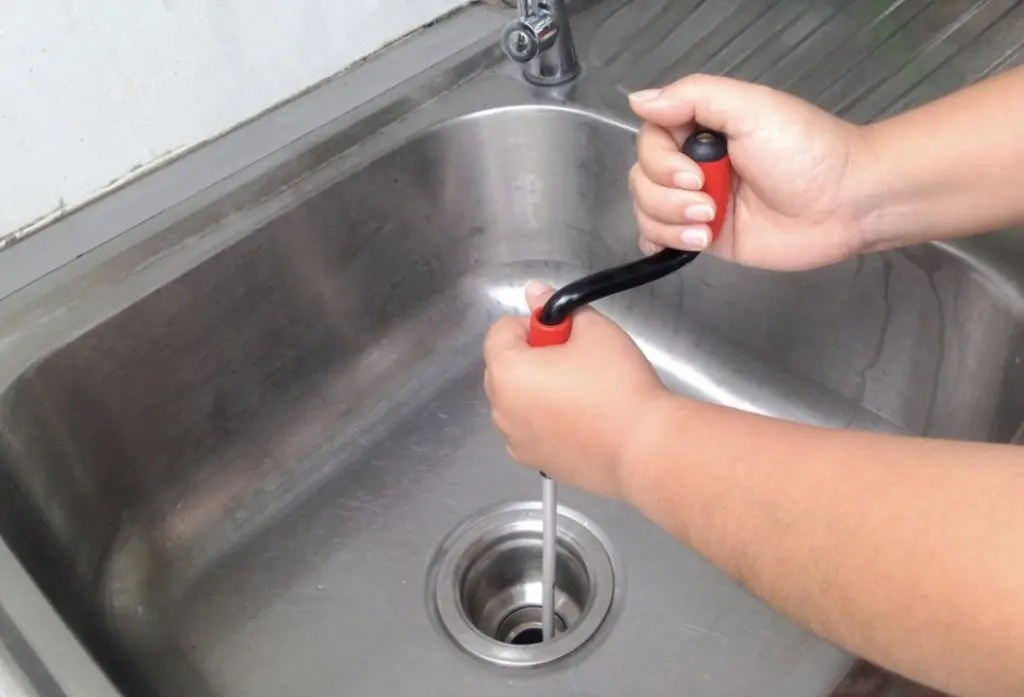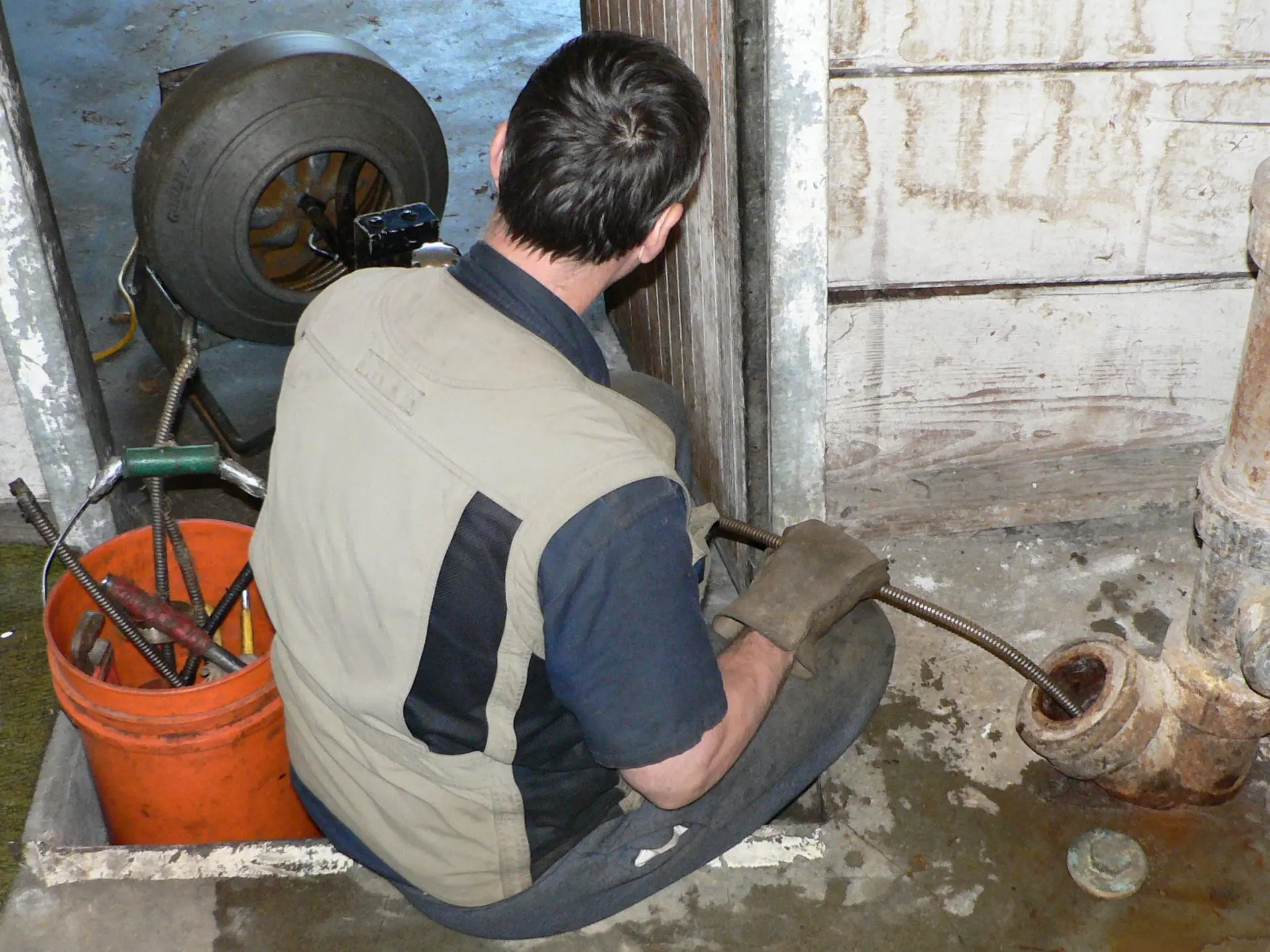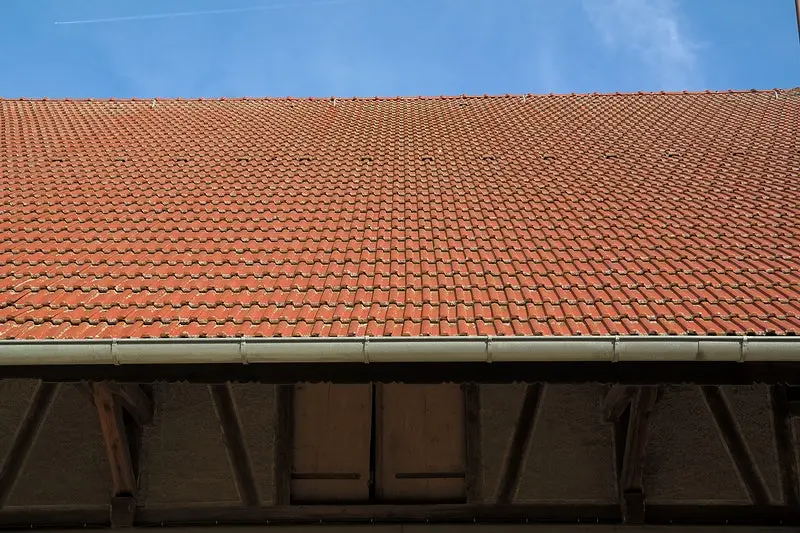A manual drain snake is an excellent tool for tackling stubborn clogs that a plunger can’t reach. Also known as a plumber’s snake or drain auger, this device is designed to “snake down” into pipes to effectively clear blockages. Using a drain snake provides a practical middle ground between simple plunging and calling in professional, powered drain augers for severe clogs.

While a plumber’s snake is often more effective than plungers at clearing clogged drains, it requires more skill to operate. Maneuvering the flexible cable through tight bends and twists in plumbing can be challenging. To ensure success, it’s essential to understand how a drain snake works and learn the best techniques for using it. This comprehensive guide covers everything you need to know about drain snakes, from basics to advanced tips.
How to Use a Plumber Snake (And What Exactly Is an Auger Anyway?)
An auger is a tool designed to bore into or cut through obstructions, commonly referred to as a drill in some contexts. In plumbing, a snake or auger is a long, flexible metal cable with a coiled spring at one end and a handle at the other. The auger head resembles a corkscrew, allowing it to latch onto blockages within pipes. Most residential plumbing augers range from 20 to 50 feet in length and coil into a compact housing when not in use. Typically, these tools are manually operated via a crank or rotatable handle, enabling you to advance and rotate the cable through tight pipe bends.
To clear a drain using an auger, you first insert the auger head into the drain opening and manually feed it through the pipe until it reaches the clog. As you crank the handle, the auger’s head breaks up or hooks the obstruction, which you then remove by pulling the snake back out. This method provides a direct, effective approach to unclog stubborn drains that plungers can’t clear.
How to Use a Drain Snake
1. Prepare for a Mess: Wear old clothes and place towels under the pipes. Depending on the clog type, snaking can be messy, especially if you remove the p-trap.
2. Remove the P-Trap (Optional but Recommended): The p-trap is the curved pipe under your sink that prevents sewer gases from entering your home. Usually made of PVC or metal, it’s best to remove and clean it before snaking. This may eliminate the clog entirely or make snaking easier. Use your hands or an adjustable wrench to detach it carefully.
3. Remove the Trap Arm (Optional): The trap arm connects the p-trap to the main wall drain. Locate the coupling nut holding it in place and loosen it if possible. If glued, do not attempt removal. Clean the trap arm thoroughly after removal.
4. Insert the Snake: Feed the auger head by hand into the drain opening or wall pipe. Avoid forcing it in to prevent damage. Run cold water if the trap is still attached to help lubricate the pipe.
5. Uncoil the Snake: Keep the handle close to the pipe entrance and gradually feed the cable while turning the crank. You may feel resistance as you encounter the clog or bends.
6. Break Through the Obstruction: Rotate the handle while gently pushing and pulling the cable to break up or latch onto the clog. If you hear scraping or excessive resistance, stop and adjust to avoid pipe damage.
7. Remove the Snake and Clean Up: Slowly retract the snake and clear debris from the auger head. Reinstall the trap arm or p-trap if removed.
8. Test the Drain: Run water to ensure the clog is cleared. If not, repeat the process or consider contacting professionals to avoid damaging your plumbing.
This guide was written by Joey Denick, Owner and Operator of http://clogkingsllc.com/. At Clog Kings, LLC, we prioritize fast, efficient service to get your home or commercial building back to normal quickly. If you need expert plumbers in St. Petersburg, FL, we’re here to help.
What to Do If Your Drain Snake Gets Stuck in the Drain
Drain snakes can occasionally get stuck during use. If this happens, don’t panic—here’s what you should do to safely remove it without damaging your pipes:
Stop Turning the Handle: Immediately stop turning to avoid tightening the snake’s grip on the pipe.
Gently Pull Back: Try wiggling and pulling the snake gently to loosen it.
Rotate the Snake: Carefully rotate clockwise and counterclockwise to free the cable. Using pliers can provide extra grip if needed.
Apply Lubricant: Use a safe lubricant (like a mixture of dish soap and water) around the stuck area to reduce friction.
Use Reverse Motion: If your snake supports reverse operation, try reversing the direction to ease removal.
Call a Professional: If these steps fail, consult a licensed plumber to avoid costly pipe damage.
Read More: GeoStorage: Delivering Excellence in Clinical Trial Logistics Since 2010
Regular maintenance and proper use of drain snakes enhance their effectiveness and prolong the lifespan of your plumbing. For stubborn or recurring clogs, consider inspecting wastewater flow and avoid flushing non-degradable items. Employing preventative measures such as drain strainers and monthly cleaning routines can minimize the frequency of deep clogs, saving you time and expenses in the long run.



